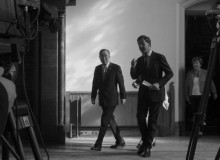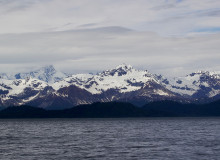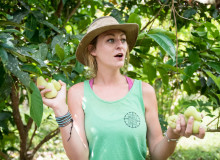Adaptation
The planet is changing. The cockroaches will be fine, but what about us? See what these PF Members are doing to adapt to the impacts of climate change.
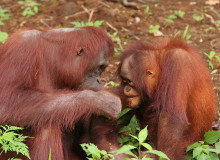
(Su Neko/Creative Commons)
Health In Harmony
"Our over-consumption of Earth’s resources has destroyed animal habitats, polluted the environment, and decimated wildlife populations. Humans created this crisis. We are also able to stop it."
Planet Forward Correspondent | George Washington University
A team of engineers have big plans to prevent the collapse of the world's ice sheets — and it could be the largest civil engineering project ever attempted.
Planet Forward Correspondent | Northwestern University
This Tuesday marked the launch of the Global Commission on Adaptation, an environmental initiative led by Bill Gates, former U.N. Secretary-General Ban Ki-moon and World Bank CEO Kristalina Georgieva.
Planet Forward Senior Correspondent | Cornell University
Next in our Alaska series: Climate change isn’t just seen – it’s felt. Weather and temperature fluctuations aside, many experience health impacts caused or exacerbated by climate change.
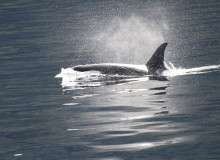
“Killer whales are apex predators, the dominant animals in these waters," explains Christine West, a naturalist aboard the National Geographic Sea Lion. This means their health reflects that of the entire habitat, as pollutants at every trophic level will travel up the food web and into these organisms. By the time these impacts are visible, however, it may be too late for a simple, one-size-fits-all solution. (Mike Harris/Lindblad Expeditions)
UC Berkeley
In story three of our Stories of Alaska series, we hear from a Lindblad Expeditions naturalist, who talks about living and working in a place where people see the consequences of their actions in real time.
Northwestern University
Medill's Nefertari Bilal reports: The rise of tourism in Guna Yala promises profit, but locals face challenges posed by both globalization that tourism brings and the threat of the industry's collapse, posed by climate change.
Northwestern University
Kalu Yala is host to small scale agroforestry in the Panamanian jungle — rows of alternating crops integrated with the natural environment, an image of the symbiosis that can exist between humans and the environment. Grace Wade reports for Medill.
Northwestern University
Separated by miles of ocean and a 2-hour drive, or a 50-mile hike, through the jungle, Guna Yala and Kalu Yala are two of Panama’s most sustainable communities, but they also are starkly different. Medill's Luodan Rojas reports.
SUNY: College of Environmental Science and Forestry
An interview with Town Supervisor, Dave Jones, of Fenner looking into the Fenner Wind Farm.
SUNY-ESF
Synopsis of the recent New York State's Harmful Algal Bloom Summit hosted by SUNY-ESF in Syracuse, New York.

